2020 Ibis Mojo HD5
Geometry: See below
Wheels: 27.5′′
Travel: 153 mm rear / 170 mm front
Stated Weight
- Size Medium frame w/o shock: 2.54 kg / 5.6 lbs
- Lightest Full Build: 12.7 kg / 28 lbs
MSRP:
- SRAM NX Build: $4,399
- Shimano SLX Build: $5,199
- SRAM GX Build: $5,499
- Shimano XT: $5,899
- SRAM X01 AXS: $8,299
- Shimano XTR: $9,299
- Frame only w/ Fox DPX2 shock: $2,999
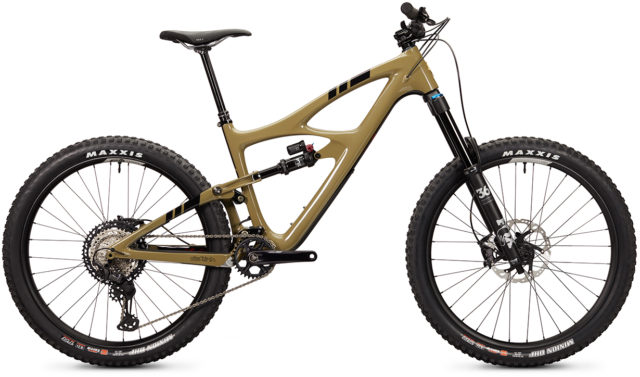
Intro
Ibis just released the newest version of their 27.5” Enduro bike, the Mojo HD5. Noah Bodman tested — and came away impressed with — the prior-generation Mojo HD4, positioning it as a capable descender that climbs very well, given its prowess on the way back down. The HD5 doesn’t appear to stray very far from that proven recipe, but does offer updated geometry and a few other new touches that set it apart from the older bike.
Ibis says that team riders Bex Baroana and Lew Buchanan have been racing prototypes of the HD5 on the EWS circuit all season, and the two are featured in the release video:
The Frame
Like every Mojo HD generation before it, the HD5 is only available with a carbon frame, and is built around DW-Link suspension — 153 mm of travel’s worth on the HD5. Visually, the HD5 looks nearly identical to the HD4 — the overall lines are the same, and most of the main features are carried over, such as rubber guards on the downtube and chainstays, space for a water bottle in the main triangle, and internal cable routing.
The HD5 does add internal routing for the rear brake, which can be a bit of a pain when dealing with routing hydraulic lines through the frame, and, often, re-bleeding afterwards. But Ibis has added molded-in tubes to guide the housing through the frame, and Ibis promises a hassle-free build experience.
The HD5 also keeps the HD4’s threaded bottom bracket — a welcome feature. Backlash against press-fit BBs on mountain bikes has been considerable, and it’s great to see Ibis steering clear.
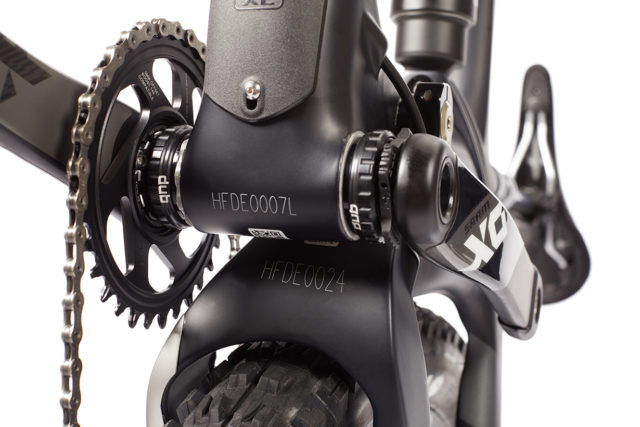
They’ve also shortened the seat tube slightly to allow for longer dropper posts on all sizes, and switched over to a “Ripmo style” lower link, which substitutes bearings for Igus bushings, in the name of reduced weight and increased stiffness.
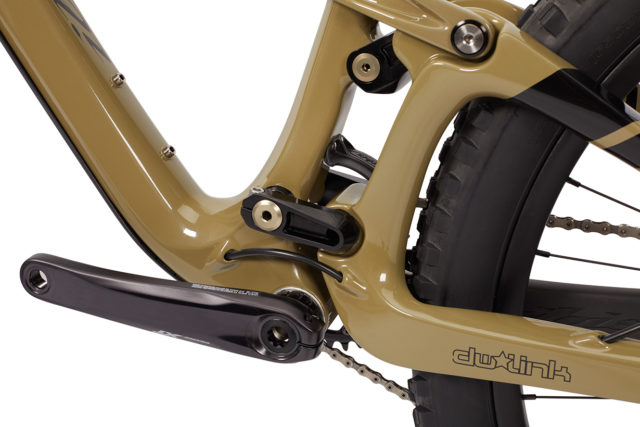
The Builds
The HD5 is offered as a frame only, for $2,999, or six complete builds, ranging from the base NX Eagle build for $4,399, to the top-shelf XTR for $9,299. SLX, GX, XT, and XO1 AXS builds fall in between. All six builds come with Fox suspension, but somewhat disappointingly — especially in light of the recently released Ripmo AF coming with top-of-the-line suspension across the range — only the top-tier XTR build comes with the Factory 36 and DPX2. The rest of the builds make do with the 36 and DPX2 Performance, with less adjustable dampers (and, less importantly, no shiny Kashima coating). That said, you can upgrade any of the Mojo HD5 builds with a Factory 36 fork for $489 and / or a Factory X2 shock for $270. You can also add Ibis Carbon Logo wheels for $800, or i9 carbon wheels for $1300.
For reference, here are the MSRP’s for all of the available Mojo HD5 builds:
- SRAM NX Build: $4,399
- Shimano SLX Build: $5,199
- SRAM GX Build: $5,499
- Shimano XT: $5,899
- SRAM X01 AXS: $8,299
- Shimano XTR: $9,299
All the builds use a 170mm-travel fork, which Ibis notes yields 153 mm of vertical travel — a tidy match for the rear — since fork travel is measured along the headtube axis, but rear travel is (generally) measured vertically. Ibis also makes a big point of talking about their “Traction Tune” damper tunes, which essentially sound like lighter-than-average damping tunes on both compression and rebound. Ibis argues that this helps the wheel move out of the way of square-edged bumps faster, and rebound on the back side more quickly as well, all in the name of maintaining traction — you can see their video explaining the concept below. There’s probably some truth to that, but I do wonder how supportive the tune will feel when really charging hard. There’s generally a tradeoff to be had between plushness and support, and these tunes sound like they trend more towards the former, but we’ll need to get some ride time on one to know more.
Unlike the HD4 that Noah reviewed, the HD5 dispenses with the semi-plus size 2.6” rubber. Instead, all HD5 complete builds come with WT 2.5” Maxxis Assegai Exo+ tires front and rear, and Ibis claims 2.6” maximum tire clearance, down from 2.8” on the HD4. The slightly narrower, burlier tires make more sense to me, given the intended use of the HD5 as an aggressive Enduro bike (the 2.5” to 2.6” split is, in a lot of cases, where tires switch from burlier Enduro-oriented construction to lighter, thinner, plus-size versions). But fans of high-volume tires on the HD4 should take note.
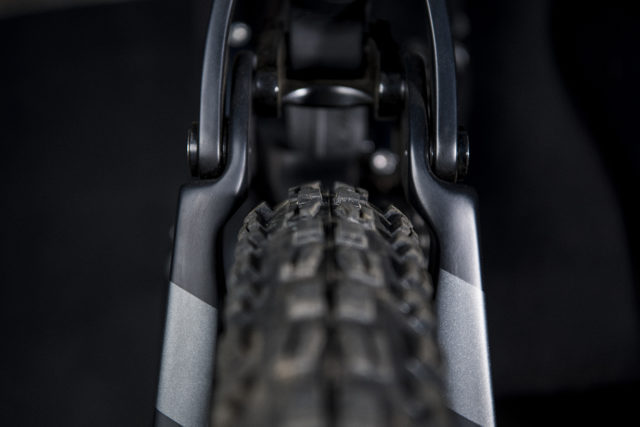
Fit and Geometry
The Mojo HD5’s geometry isn’t a wild departure from the HD4, but it has been modernized a bit, most notably in terms of seat tube angle and reach. As with the HD4, the HD5 is offered in four sizes, Small through Extra Large. Here are some of the highlights:
- 64.2° head tube angle (compared to 64.9° on the HD4)
- 76° effective seat tube angle (a full two degrees steeper than the HD4)
- 430 mm chainstays on all sizes (same as the HD4)
- 447 mm reach, size Medium (compared to 435 mm for a size Medium HD4)
- Ibis says that they kept the same top tube length, and the extra reach — about 20 mm, depending on size — comes from steepening the seat tube angle. In actual fact, the effective top tube got a little longer on most sizes as well.
Another interesting note is that, counter to the common refrain of longer / lower / slacker in modern bike press releases, the bottom bracket on the HD5 actually got a little higher, and the HD4 wasn’t especially low to begin with. This might counteract some of the extra stability found in the slacker head angle and extra wheelbase on the HD5 — we’ll be sure to weigh in once we get some ride time.
And for all the numbers, here’s the geometry chart for the Mojo HD5:
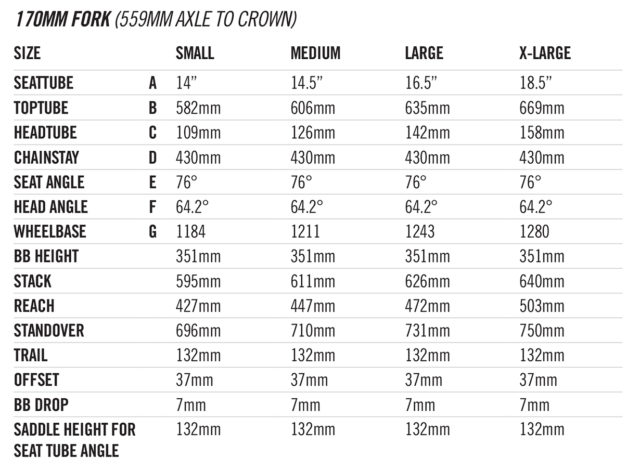
Some Questions / Things We’re Curious About
(1) The outgoing Mojo HD4 struck an interesting balance of stability and nimbleness / pop. Does the HD5 feel similar in that regard, or has its longer / slacker geometry turned it into a more one-dimensional hard charger?
(2) How does Ibis’ Traction Tune suspension really feel on the trail? Does it really offer a major increase in traction? And are the lighter damper tunes overwhelmed by really aggressive riding? Finally, in Noah’s review of the HD4, he noted a bit of pedal bob — will the lighter compression damping exacerbate this?
(3) As always with any Enduro bike, we’re curious to see where the new Mojo HD5 will fall in the current market — will it feel like a mini DH bike, a long-travel Trail bike, or something else?
Bottom Line (For Now)
The Mojo HD5 mostly looks like the HD4, with some moderate, but sensible, updates. Does the HD5 carry over most of what we liked about the HD4, or do the tweaks change it into something else entirely? Stay tuned for more info…

I don’t know how 170mm measured along a 64* axis measures out to 153mm on a vertical axis, even factoring in the steepening of the head tube through the travel. More like about 115mm…
Hey Brian,
170 x sin(64.2) = 153.05. So Ibis’ math does check out here.
https://www.youtube.com/watch?v=NfLVVJOuY5M